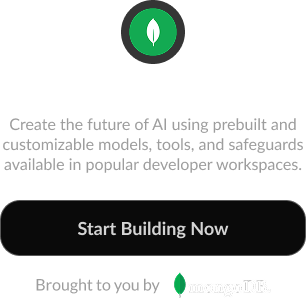Compare the Top Development Frameworks that integrate with Capacitor as of November 2025
This a list of Development Frameworks that integrate with Capacitor. Use the filters on the left to add additional filters for products that have integrations with Capacitor. View the products that work with Capacitor in the table below.
What are Development Frameworks for Capacitor?
Development frameworks are code libraries and development tools that streamline the development process for developers that build applications. Development frameworks simplify the process of programming in different languages. There are a variety of different types of development frameworks including web development frameworks, mobile app development frameworks, frontend and backend frameworks, and more. Compare and read user reviews of the best Development Frameworks for Capacitor currently available using the table below. This list is updated regularly.
-
1
React
React
React makes it painless to create interactive UIs. Design simple views for each state in your application, and React will efficiently update and render just the right components when your data changes. Declarative views make your code more predictable and easier to debug. Build encapsulated components that manage their own state, then compose them to make complex UIs. Since component logic is written in JavaScript instead of templates, you can easily pass rich data through your app and keep state out of the DOM. We don’t make assumptions about the rest of your technology stack, so you can develop new features in React without rewriting existing code. React components implement a render() method that takes input data and returns what to display. This example uses an XML-like syntax called JSX. Input data that is passed into the component can be accessed by render() via this.props.Starting Price: Free -
2
Angular
Angular
Learn one way to build applications with Angular and reuse your code and abilities to build apps for any deployment target. For web, mobile web, native mobile and native desktop. Achieve the maximum speed possible on the Web Platform today, and take it further, via Web Workers and server-side rendering. Angular puts you in control over scalability. Meet huge data requirements by building data models on RxJS, Immutable.js or another push-model. Build features quickly with simple, declarative templates. Extend the template language with your own components and use a wide array of existing components. Get immediate Angular-specific help and feedback with nearly every IDE and editor. All this comes together so you can focus on building amazing apps rather than trying to make the code work. From prototype through global deployment, Angular delivers the productivity and scalable infrastructure that supports Google's largest applications.Starting Price: Free -
3
Svelte
Svelte
Svelte is a radical new approach to building user interfaces. Whereas traditional frameworks like React and Vue do the bulk of their work in the browser, Svelte shifts that work into a compile step that happens when you build your app. Instead of using techniques like virtual DOM diffing, Svelte writes code that surgically updates the DOM when the state of your app changes. We're proud that Svelte was recently voted the most loved web framework with the most satisfied developers in a pair of industry surveys. We think you'll love it too. Read the introductory blog post to learn more. Svelte is a tool for building fast web applications. It is similar to JavaScript frameworks such as React and Vue, which share a goal of making it easy to build slick interactive user interfaces. But there's a crucial difference: Svelte converts your app into ideal JavaScript at build time, rather than interpreting your application code at run time.Starting Price: Free -
4
Vue.js
Vue.js
Builds on top of standard HTML, CSS and JavaScript with intuitive API and world-class documentation. Truly reactive, compiler-optimized rendering system that rarely requires manual optimization. A rich, incrementally adoptable ecosystem that scales between a library and a full-featured framework. Vue is a JavaScript framework for building user interfaces. It builds on top of standard HTML, CSS and JavaScript, and provides a declarative and component-based programming model that helps you efficiently develop user interfaces, be it simple or complex. Vue extends standard HTML with a template syntax that allows us to declaratively describe HTML output based on JavaScript state. Vue automatically tracks JavaScript state changes and efficiently updates the DOM when changes happen. Vue is a framework and ecosystem that covers most of the common features needed in frontend development. -
5
Apache Cordova
Apache Software Foundation
Mobile apps with HTML, CSS & JS. Target multiple platforms with one code base. Free and open source. Reusable code across platforms, support for offline scenarios, access native device APIs. Cordova command-line runs on Node.js and is available on NPM. Follow platform specific guides to install additional platform dependencies. Create a blank Cordova project using the command-line tool. Navigate to the directory where you wish to create your project and type cordova create <path>. After creating a Cordova project, navigate to the project directory. From the project directory, you need to add a platform for which you want to build your app. Cordova wraps your HTML/JavaScript app into a native container which can access the device functions of several platforms. These functions are exposed via a unified JavaScript API, allowing you to easily write one set of code to target nearly every phone or tablet on the market today and publish to their app stores.
- Previous
- You're on page 1
- Next

